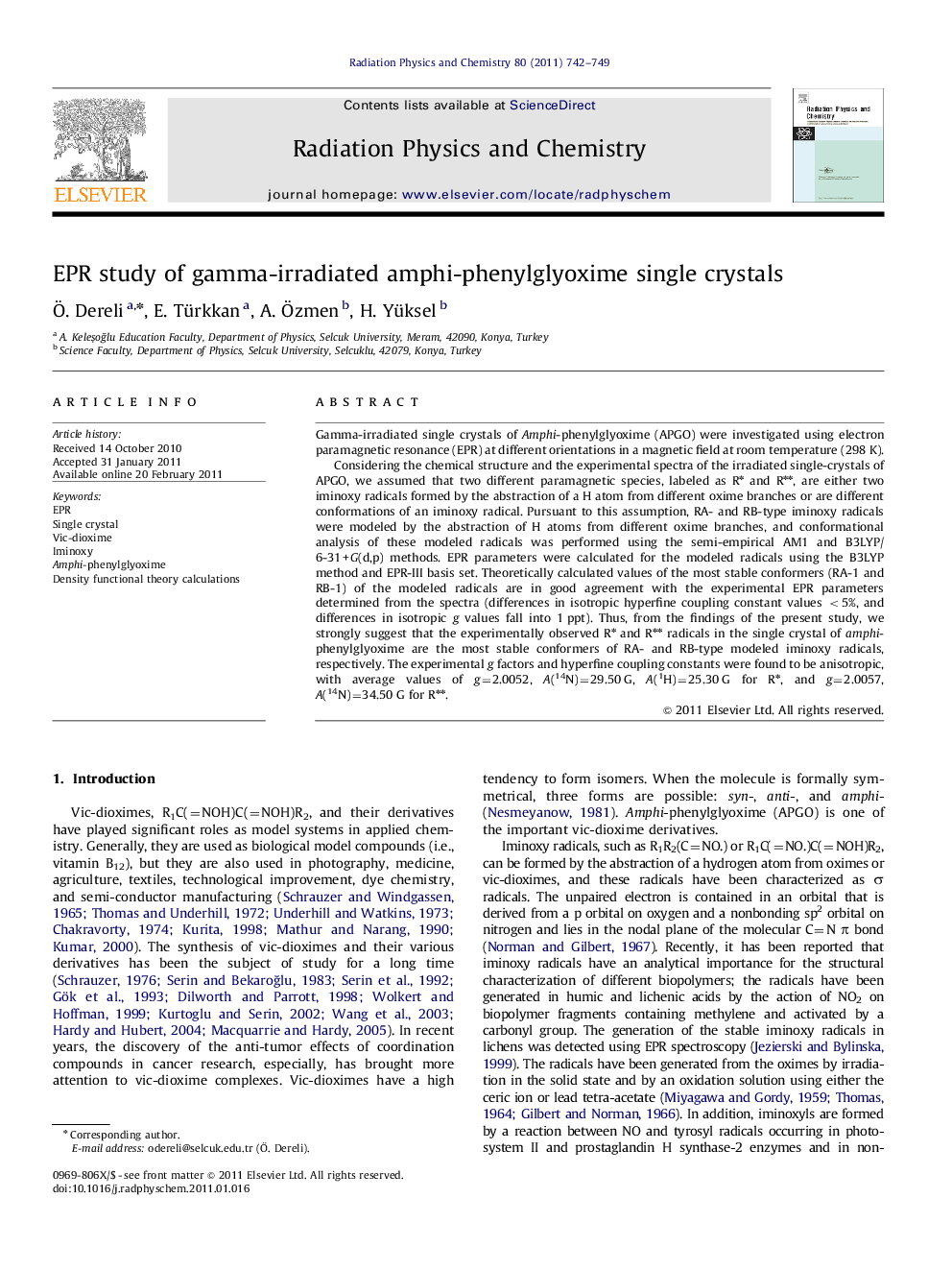| Article ID | Journal | Published Year | Pages | File Type |
|---|---|---|---|---|
| 1891670 | Radiation Physics and Chemistry | 2011 | 8 Pages |
Abstract
Considering the chemical structure and the experimental spectra of the irradiated single-crystals of APGO, we assumed that two different paramagnetic species, labeled as Râ and Rââ, are either two iminoxy radicals formed by the abstraction of a H atom from different oxime branches or are different conformations of an iminoxy radical. Pursuant to this assumption, RA- and RB-type iminoxy radicals were modeled by the abstraction of H atoms from different oxime branches, and conformational analysis of these modeled radicals was performed using the semi-empirical AM1 and B3LYP/6-31+G(d,p) methods. EPR parameters were calculated for the modeled radicals using the B3LYP method and EPR-III basis set. Theoretically calculated values of the most stable conformers (RA-1 and RB-1) of the modeled radicals are in good agreement with the experimental EPR parameters determined from the spectra (differences in isotropic hyperfine coupling constant values <5%, and differences in isotropic g values fall into 1Â ppt). Thus, from the findings of the present study, we strongly suggest that the experimentally observed Râ and Rââ radicals in the single crystal of amphi-phenylglyoxime are the most stable conformers of RA- and RB-type modeled iminoxy radicals, respectively. The experimental g factors and hyperfine coupling constants were found to be anisotropic, with average values of g=2.0052, A(14N)=29.50Â G, A(1H)=25.30Â G for Râ, and g=2.0057, A(14N)=34.50Â G for Rââ.
Related Topics
Physical Sciences and Engineering
Physics and Astronomy
Radiation
Authors
Ã. Dereli, E. Türkkan, A. Ãzmen, H. Yüksel,
